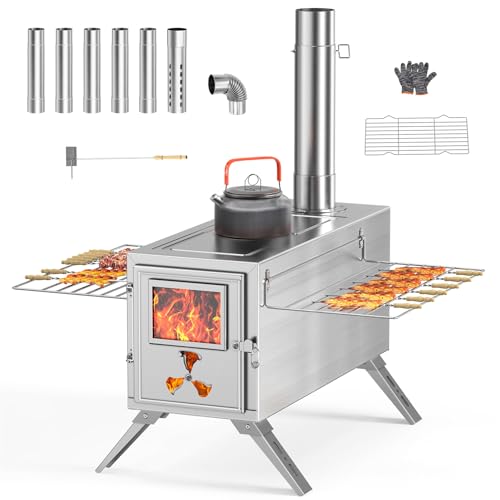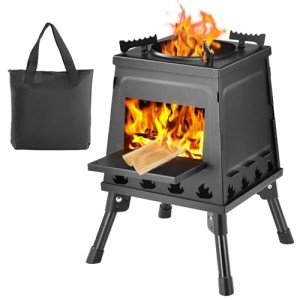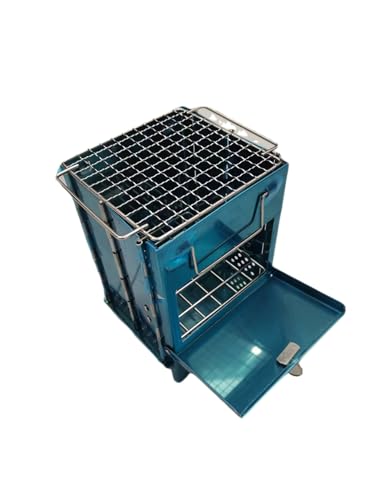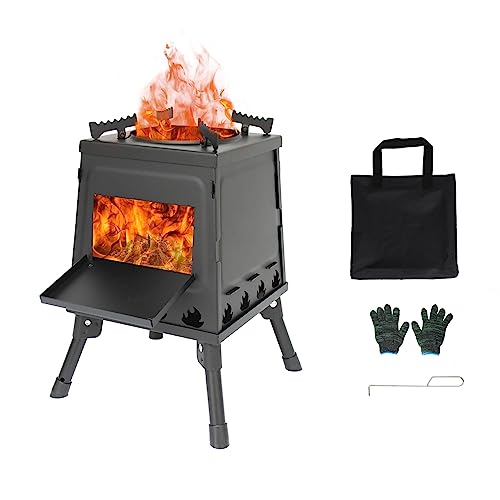Camping and hiking enthusiasts often chase the thrill of the great outdoors, seeking the liberation that nature provides. However, enjoying nature should not mean sacrificing comfort or convenience. Enter the portable wood burning stove—an innovation that combines practicality with a rustic experience, allowing outdoor adventurers to cook, boil water, and stay warm while on the go.
What is a Portable Wood Burning Stove?
A portable wood burning stove is a compact, lightweight cooking device designed for outdoor use. Unlike traditional stoves that rely on propane or gas, these stoves utilize natural wood as fuel. This makes them not only environmentally friendly but also highly efficient for those who prefer to travel off the beaten path where access to fuel might be limited.
Key Features of Portable Wood Burning Stoves
When considering the purchase of a portable wood burning stove, it is essential to understand the various features that make these stoves a worthwhile investment. Here are some critical aspects to look for:
- Portability and Weight: Most models are designed to be lightweight and compact, making them easy to carry in a backpack.
- Multi-Fuel Capability: Some wood burning stoves can accommodate various fuel types, including twigs, leaves, and other biomass.
- Efficiency: Look for models with efficient combustion systems that maximize heat output while minimizing smoke.
- Durability: High-quality materials such as stainless steel or titanium resist corrosion and withstand the rigors of outdoor use.
- Ease of Setup: Many models offer quick assembly features that make them user-friendly, even for first-time campers.
Benefits of Using a Portable Wood Burning Stove
1. Eco-Friendly Cooking
By utilizing wood as fuel, these stoves produce significantly lower emissions compared to their gas counterparts. This makes them a responsible choice for environmentally-conscious campers who wish to minimize their ecological footprint.
2. Abundant Fuel Source
Wood is readily available in nature. Whether it be twigs, branches, or fallen logs, campers can often find enough fuel without having to carry extra supplies.
3. Cost-Effective
Once the initial investment is made in purchasing a portable wood burning stove, the ongoing cost is limited to collecting fuel from the surroundings. This can be far more economical than purchasing propane or battery-powered devices.
4. Cooking Versatility
Portable wood burning stoves can handle various cooking methods, including boiling, grilling, and even smoking food. Their diverse capabilities allow campers to prepare meals that rival home-cooked comfort food.
5. Warmth and Comfort
When temperatures drop during a chilly night in the woods, a wood burning stove serves a dual purpose by providing warmth in addition to cooking. It creates a cozy atmosphere that enhances the camping experience.
Popular Models on the Market
When it comes to purchasing a portable wood burning stove, there are numerous options available. Here are some of the standout models to consider:
-
Solo Stove Lite: Noted for its double-walled construction, it creates a secondary combustion chamber that increases efficiency. It is lightweight and easy to pack.
-
Campfire in a Can: Combines the features of a portable wood burner with a simplified design. It includes a convenient carrying case and can be assembled with minimal effort.
-
EcoZoom Dura: Known for its versatility, this model can burn wood, charcoal, or solid biomass fuels. It features a thick ceramic lining for durability and provides excellent insulation for efficient heat retention.
-
Wood Burning Backpacking Stove by AOTU: This stove is designed specifically for hikers, featuring a collapsible design that fits into a compact storage bag, making it a favorite for long treks.
Tips for Using a Portable Wood Burning Stove
When using a portable wood burning stove, following best practices can enhance both the cooking experience and safety. Here are a few tips:
-
Collect Information on Local Regulations: Before starting a fire, check local laws and guidelines about campfires or wood burning stoves, particularly in protected areas.
-
Choose the Right Location: Set up the stove on level, stable ground, away from flammable materials like dry grass or leaves.
-
Prepare Your Fuel in Advance: Collect and prepare dry twigs or small logs before fire-starting, keeping them at hand for quick refueling.
-
Always Have Fire Safety Equipment Nearby: Carry items such as a fire extinguisher, water, or dirt to extinguish the flame quickly if needed.
-
Properly Extinguish the Fire: Ensure you completely put out the stove after use, following Leave No Trace principles to protect the environment.
FAQs About Portable Wood Burning Stoves
1. Can I use a portable wood burning stove in a rainstorm?
While the stove can technically be used in rain, it’s best to operate it in dry conditions for safety and efficiency. It’s recommended to have a small tarp or covering to shield from rain.
2. Are portable wood burning stoves safe for cooking?
Yes, when used according to the manufacturer’s guidelines and local regulations, these stoves are safe for cooking.
3. How do I maintain my wood burning stove?
Regularly clean the stove after each use and inspect for any signs of damage. Store it properly to prevent rust or degradation.
4. What is the best fuel for these stoves?
Dry wood, twigs, and other types of biomass are ideal as they burn cleanly and efficiently.
5. Can I use a portable wood burning stove in national parks?
Most national parks permit the use of wood burning stoves, but always check specific regulations as they can vary.
Portable wood burning stoves significantly enhance the outdoor experience for campers and hikers. Their practicality, environmental benefits, and ability to provide warmth and sustenance make them a superb addition to any outdoor adventure toolkit. As outdoor enthusiasts embrace the freedom of nature, a portable wood burning stove can offer a touch of home, transforming camping from a mere escape into a memorable culinary journey amidst the great outdoors.






